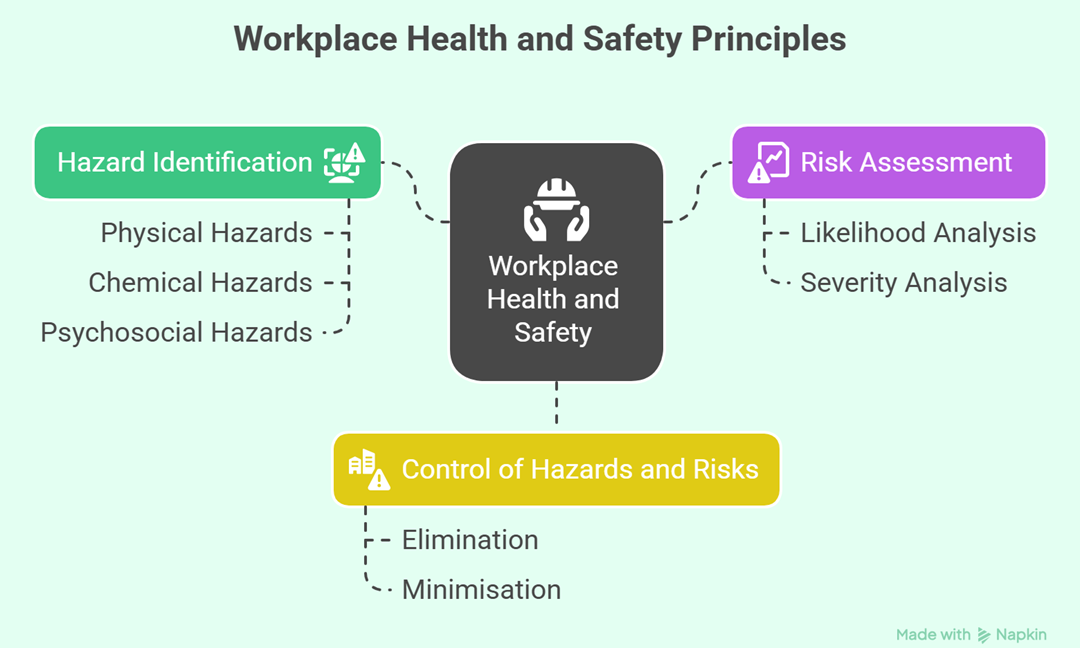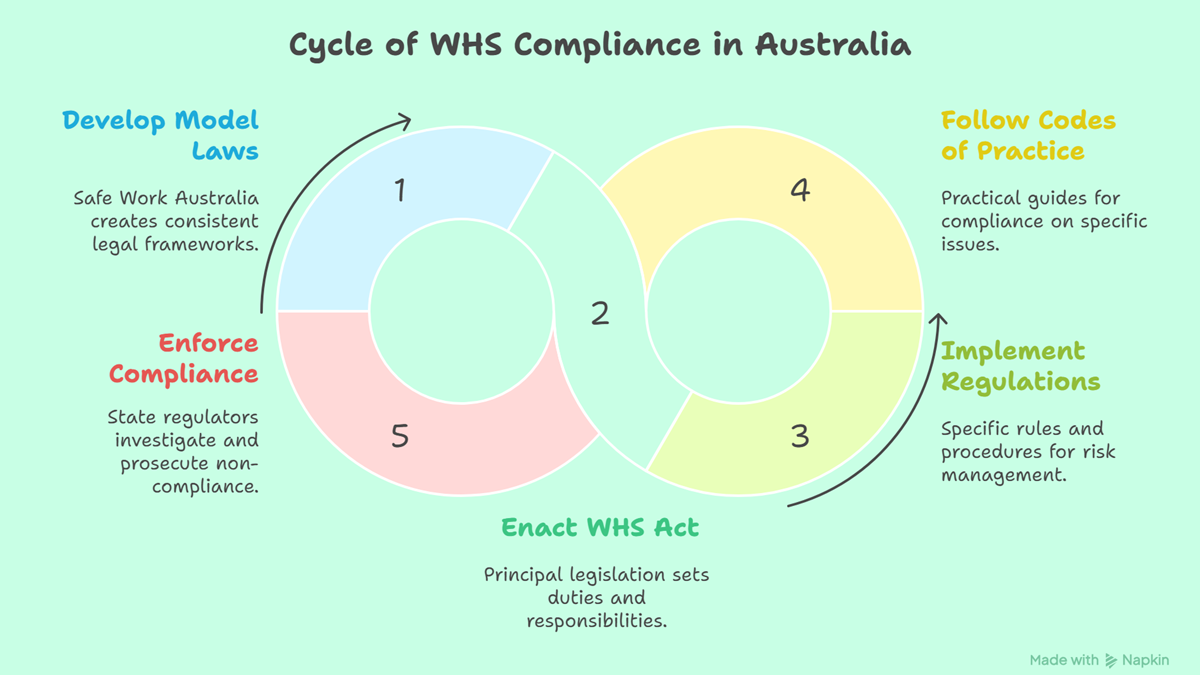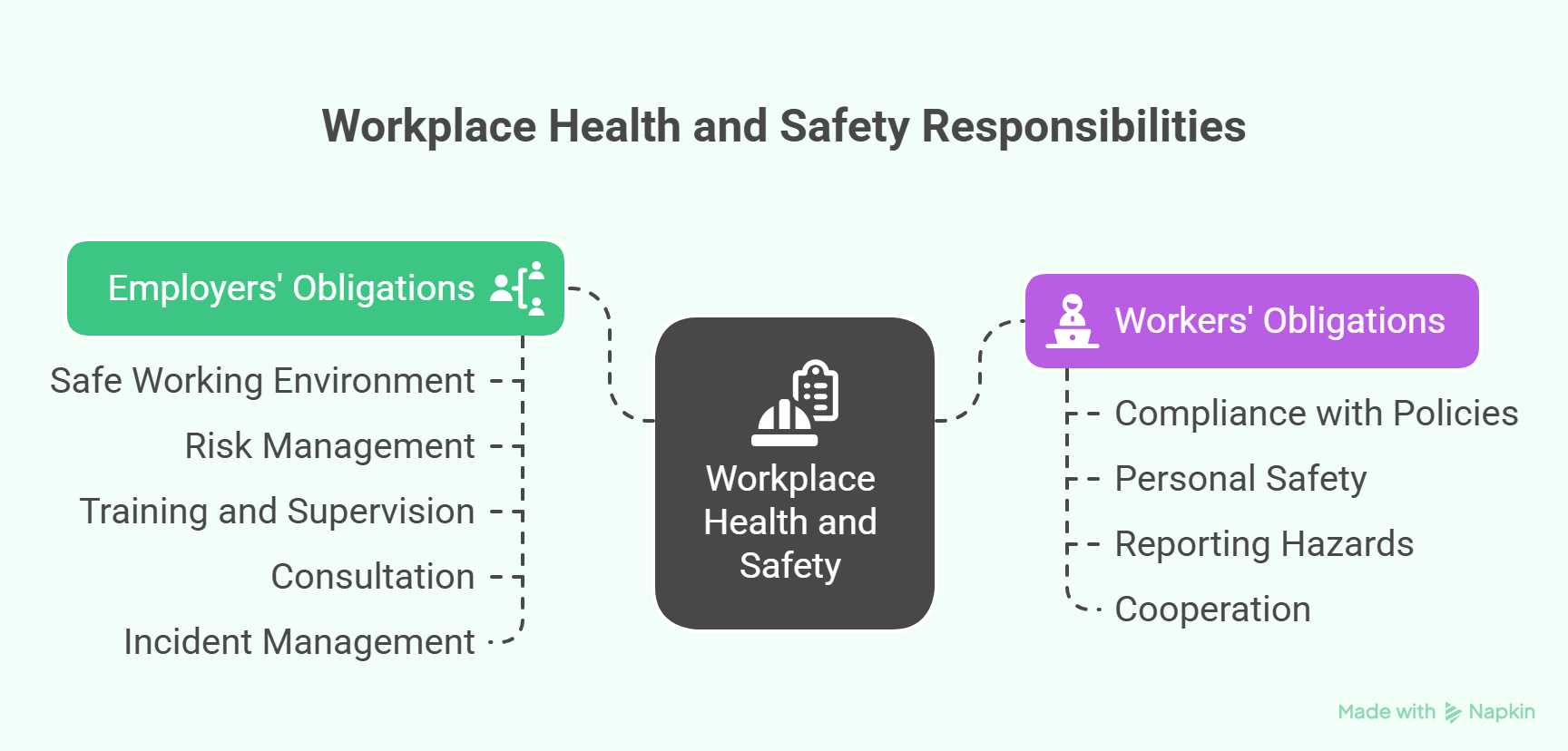What Is WHS and Why Is It Important in Australia
Work Health and Safety (WHS) is Australia’s framework for protecting the physical and mental well-being of workers, visitors, and the public in workplaces. Governed by laws such as the Work Health and Safety Act 2011, WHS ensures that businesses prioritise hazard prevention, risk management, and compliance. Here’s a detailed overview of WHS, its legal foundations, and its significance.
What Is WHS?

Workplace Health and Safety (WHS) refers to practices designed to prevent injuries, illnesses, or accidents in the workplace. It's a risk-based approach built on three core principles:
- Hazard Identification: Proactively spotting potential sources of harm. This includes physical hazards (faulty equipment), chemical hazards, and psychosocial hazards (workplace bullying or stress).
- Risk Assessment: Analysing the likelihood and severity of harm from identified hazards.
- Control of Hazards and Risks: Implementing effective measures to eliminate or minimise risks. This is guided by the hierarchy of controls, which prioritises the most effective solutions, such as eliminating the hazard.
WHS vs. OHS: What’s the Difference?
The transition from Occupational Health and Safety (OHS) to Work Health and Safety (WHS) marks a significant milestone in Australia's approach to workplace safety.
- OHS (Occupational Health and Safety) was the previous term, with laws and regulations differing significantly by state and territory. This created inconsistencies and complexity for businesses operating across multiple jurisdictions.
- WHS (Work Health and Safety) replaced OHS following the 2011 harmonisation of laws by Safe Work Australia. WHS establishes a national standard, ensuring consistent safety regulations across states and territories (except Victoria and WA, which maintain OHS but align closely).
WHS Legislation in Australia

WHS laws are based on a harm-minimisation model, requiring employers to identify and eliminate workplace risks. Key components include:
- Model WHS Laws: Developed by Safe Work Australia, these are the foundation for consistent legislation across jurisdictions.
- WHS Act 2011: The principal legislation that sets out the duties and responsibilities for all workplace participants.
- WHS Regulations 2011: Provides specific, detailed rules and procedural requirements for managing risks, reporting incidents, and conducting training.
- Model Codes of Practice: These practical guides offer step-by-step advice for complying with the law on specific issues, such as managing electrical risks or working in confined spaces.
- Enforcement: Enforcement is led by state and territory regulators, such as SafeWork NSW and WorkSafe Victoria, who have the power to investigate incidents, issue improvement notices, and prosecute non-compliant entities..
Key Stakeholders in WHS Implementation
- Safe Work Australia maintains model laws but does not enforce them.
- Comcare manages workplace health and safety for Commonwealth employees.
- PCBUs (Persons Conducting a Business or Undertaking) are employers or entities responsible for ensuring worker safety.
- Standards Australia develops safety standards for equipment and processes.
- State and Territory Governments enforce laws and promote compliance.
Who Is Responsible for WHS?

WHS is fundamentally a shared responsibility that requires active participation from everyone in the workplace.:
Employers’ obligations
- Provide a safe working environment, including a physically safe workplace and safe systems of work.
- Eliminate or minimise risks as far as is reasonably practicable.
- Provide all necessary training, information, and supervision.
- Consult with workers and their representatives on WHS matters.
- Have clear procedures for incident investigation and reporting.
Workers’ Obligations
- Follow all reasonable WHS instructions and policies.
- Take reasonable care for their safety and the safety of others.
- Report any hazards or incidents to their supervisor or manager.
- Cooperate with any reasonable WHS policy or procedure.
Why Is WHS Important?
Adhering to WHS is not just about avoiding fines. It's a strategic business decision that offers significant benefits.
- Saves Lives: In 2022–23, 195 workers died in Australia (Safe Work Australia data). Strong WHS practices are the most effective way to reduce this number and prevent workplace incidents.
- Ensures Legal Compliance: The penalties for non-compliance are severe. Businesses can face fines of up to $3 million, and individuals can face fines or even jail time for serious breaches. For example, a Queensland company was fined $450,000 in 2023 for a scaffolding incident, demonstrating the high cost of negligence.
- Drives Economic Efficiency: Strong WHS practices lead to significant cost savings by preventing expenses related to compensation claims, legal fees, and operational downtime caused by accidents and investigations.
- Boosts Productivity: A safe workplace reduces absenteeism and builds employee trust. Workers who feel secure are more engaged, productive, and committed to their roles.
- Reputation Protection: A strong safety culture attracts top talent, builds trust with clients and partners, and protects your brand reputation.
Tools for Compliance: Streamline WHS with Technology
-1.png)
Modern technology is a powerful tool for simplifying WHS compliance. Solutions can help businesses by:
- Automating Risk Assessments: Replacing manual checklists with digital forms for more efficient and accurate risk management.
- Centralising Incident Reporting: Providing a single platform for reporting, investigating, and tracking incidents, ensuring nothing falls through the cracks.
- Managing Training Records: Keeping all worker training and certification records up-to-date and easily accessible.
By leveraging these tools, businesses can create a proactive and robust safety culture that goes beyond basic compliance.
The Future of WHS: Prioritising Mental Health
The focus of WHS is evolving to include psychosocial hazards, which are aspects of work that can cause psychological harm. Businesses are now required to manage risks related to:
- High job demands and low job control
- Workplace bullying and harassment
- Poor support or lack of clarity in roles
- Remote work and isolation
Managing these mental health risks is a growing priority for businesses and regulators, reflecting a more holistic view of workplace safety.
Conclusion
Work Health and Safety is an ongoing commitment. By understanding the laws, fostering a shared responsibility culture, and embracing modern tools, Australian businesses can protect their people, their reputation, and their bottom line.






